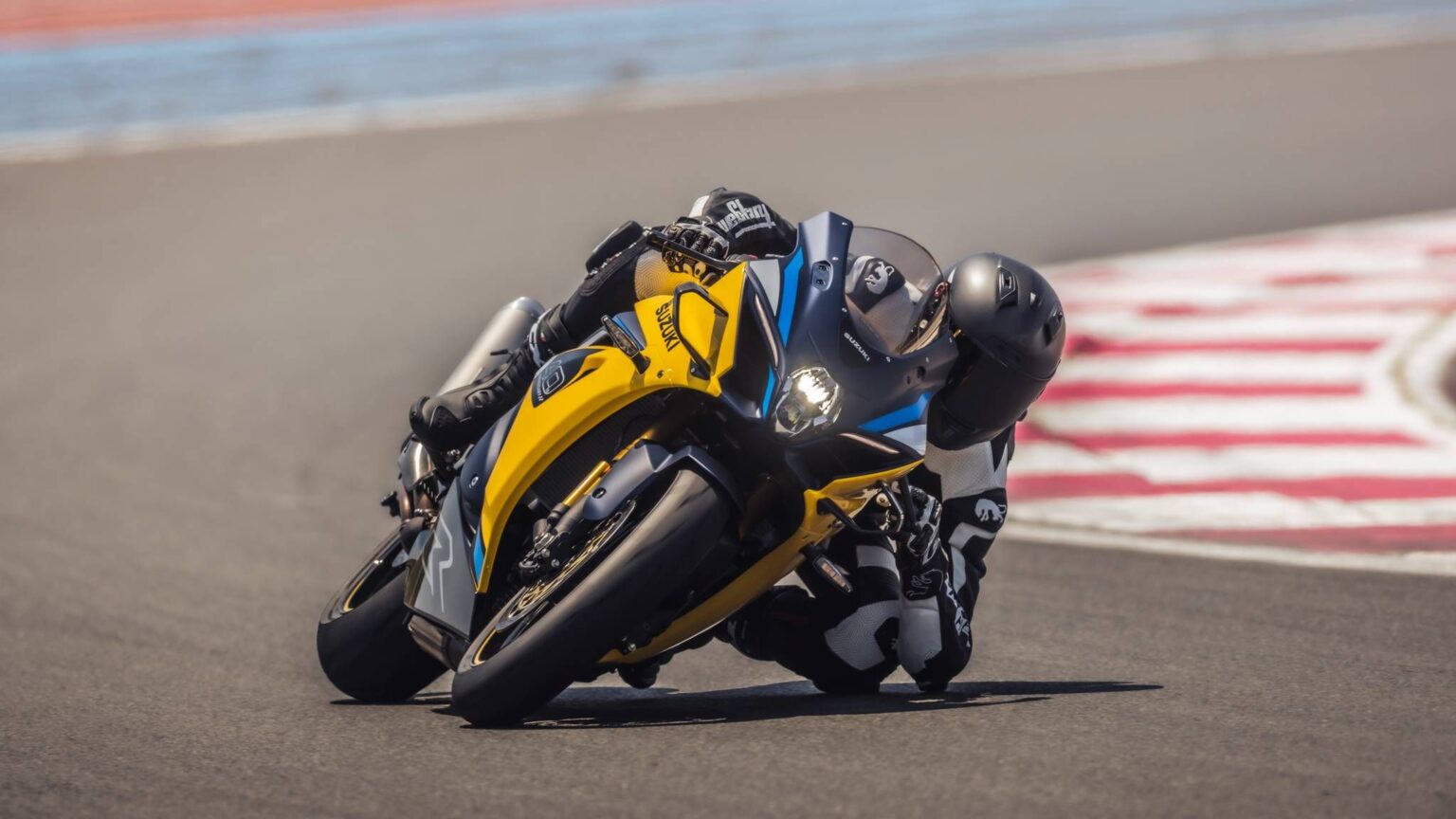After almost a decade of no updates, Suzuki has finally resurrected its flagship superbike–the GSX-R1000R–for 2026. There are some notable changes here and there, but some things are disappointing. With this move, the bikemaker aims to sway sales from its inline-four rivals, such as the Kawasaki Ninja ZX-10R and Yamaha YZF-R1 in the US. The American pricing is still under wraps for now, though.
An Updated 1000cc Inline-Four Engines Powers The 2026 GSX-R1000R
The engine is what practically made Suzuki discontinue the GSX-R1000 in Europe a few years ago. So it’s no surprise that’s where we see the most changes. These include:
- New crankshaft with thicker journals
- New crankcases
- Wider cam chain
- New head gasket
- New piston circlips
- Revised head gasket shape
- New single-stage funnels for first and fourth cylinder
- Higher compression ratio
All that joins hands with a new exhaust system, which ends in a longer and slimmer end-can compared to the bulky previous design. These bits help the Gixxer meet stricter Euro 5+ norms, but drop the peak power to 193 horsepower and 81 pound-feet. Both these numbers are more than enough for serious speeds.
Yet, they’re some of the lowest in the new-age superbike segment. The YZF-R1 has 197 ponies, the ZX-10R has 200, and the CBR1000RR-R leads the way with 215 horsepower. Expect the Gixxer’s power to hit you hard, though, since it has retained the MotoGP-derived VVT system.
2026 GSX-R1000R Power And Torque
|
Capacity |
1000cc |
|
Layout |
Inline-four |
|
Power |
193 HP @ 13,200 RPM |
|
Torque |
81 LB-FT @ 11,000 RPM |
|
Transmission |
Six-speed |
Updated Electronics Help You Put All That Power To The Road
But The Instrument Cluster Is Disappointing
Since 193 horsepower is no joke, Suzuki has fine-tuned the electronics package on the Gixxer for 2026. A new six-axis IMU is present, which enables traction control (10 modes), wheelie control, and roll-torque control. All three are said to be updated for 2026 over the previous generation to promise a better riding experience. An updated launch control system and two-way quickshifter round things off.
While these are all good, the instrument cluster seems rather disappointing. It’s the same negative LCD unit from the previous generation, which seems space-age against the Gixxer’s rival. Heck, even modern-day entry-level bikes have better displays than this (Aprilia RS 457, for instance). It’s a similar story with the design. The bike looks largely the same as before, barring the new colors and the puny wings on each side of the headlight.
Key Features
- 10-mode traction control
- Launch control
- Lift control
- Roll-torque control
- Rear lift control
- Quickshifter
- Cornering ABS
- LED lights
There Are No Major Changes To The Underpinnings On The New GSX-R1000R
What about the underpinnings, you ask? Well, it’s all too similar to the previous model. You get an aluminum perimeter frame, suspended onto Showa balance-free forks and a BRFC monoshock. Both ends have full adjustment, so you can chase tenths around a lap. This is topped with 17-inch alloy wheels, each wrapped in Bridgestone RS11 tires.
As for brakes, you still get similar Brembo monobloc calipers as in previous years. That’s a serious bummer considering these were the biggest pain point on the Gixxer in the past. Not to mention, even middleweights have Stylemas nowadays. A small good news, though, is that the weight is identical to the old model, even with all the changes.
2026 GSX-R1000R Dimensions
- Weight: 447 pounds
- Seat height: 32.5 inches
- Wheelbase: 55.9 inches
- Ground clearance: 5.1 inches
Read the full article here


